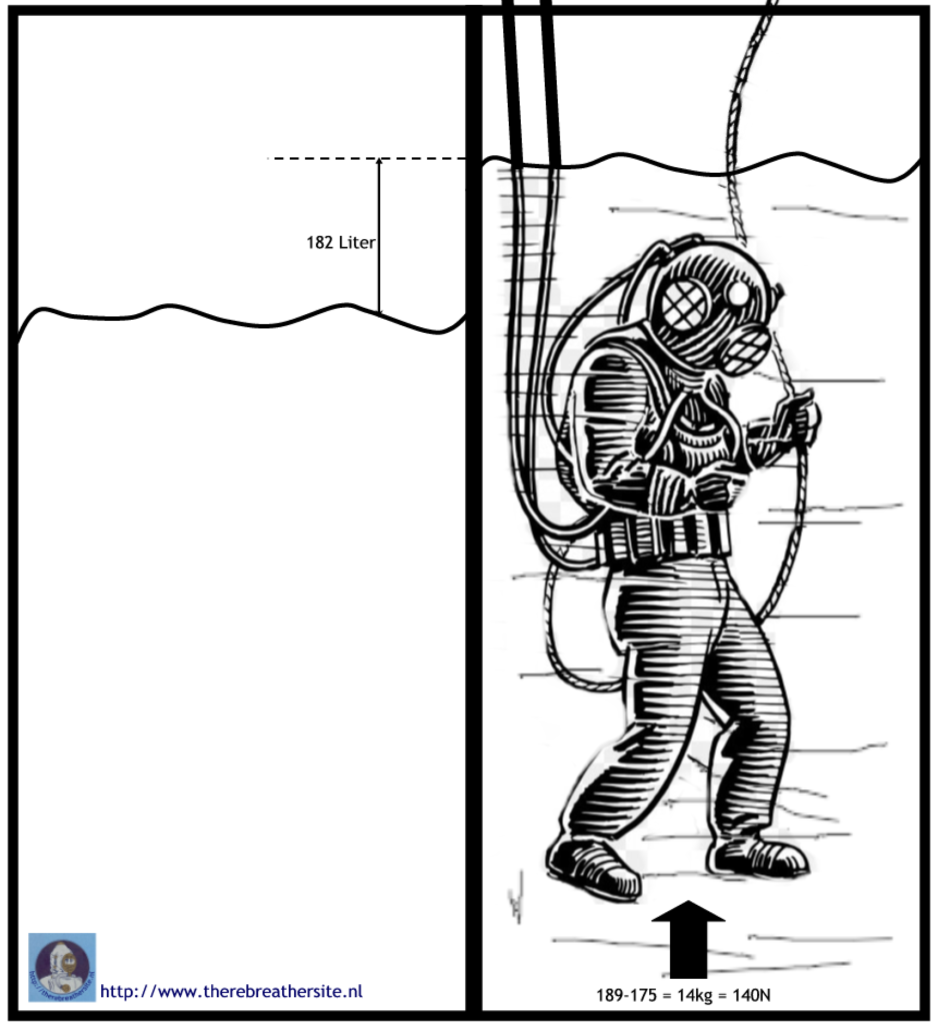
Why are divers wearing weight belts?

You all know the phenomenon that if you throw something into the water one object will float and the other will sink. At first you think about the weight, a brick is much heavier than wood, isn’t it? But there is a catch. So how is it possible that a steel aircraft carrier including everything on board will float? It starts with a very special story of the great man behind this story!

King Hieronymus of Syracuse wanted to offer the gods a golden crown and commissioned an artist to make a beautiful crown. After receiving the completed crown, the king wondered whether the crown was made of pure gold. Perhaps it was made of another metal that resembled gold, a trick used by counterfeiters at the time to forge coins. The king asked Archimedes of Syracuse (287BC-212BC) whether he could determine if the crown was made of pure gold. The crown had to remain in one piece and not be damaged!
Archimedes did not know what to do with this question and decided to take a bath. As he lowered himself into the bath, he realised that he was getting lighter. Gold (19.2 kg/dm³) has a higher density than silver (10.5 kg/dm³) and a golden crown therefore has a smaller volume than an equally heavy silver crown. From the upward force of the water he should therefore be able to determine the volume of the crown and by combining this with the weight of the crown he should be able to determine whether the crown was made of pure gold. He was so happy to have solved the problem that he jumped out of the bath and ran to the king without getting dressed, exclaiming “Eureka, Eureka! (I found it, I found it!).

Archimedes’ principle states that:
The upward buoyant force that is exerted on a body immersed in a fluid, whether fully or partially submerged,
is equal to the weight of the fluid that the body displaces
Well, let us take an example from diving practice. Imagine a diver in a suit with heavy diving shoes weighing on his chest and wearing a standard helmet. If we weigh this diver there are 175 kilos on the scales!

The diver goes into a tank of seawater where we can see that with his suit he moves 182 litres of water.

The upward force experienced by the diver is equal to the weight of the amount of water displaced. Seawater weighs 1040 kg per m3 so 1.04 kg per litre. Because the diver moves 182 litres, the upward force will be 182 x 1.04 = 189 kg. His own weight is 175 kilograms, this means that the diver experiences 189 – 175 kilograms = 14 kilograms of buoyancy. So in this example the diver would not sink but float.
In order to sink, the diver can put on 14 kilos of weight, he is then neutral and can descend with swimming movements. He can also let more than 14 litres of air escape from his suit so that he can sink.
In this example where the diver had a positive buoyancy of 14 kilos, there is something else special going on. Because the volume of the diver was greater than his weight, the diver floats. His volume immersed in the water is now not 182 litres (182 dm3) but 14 litres less so 182 litres – 14 litres = 168 litres. He now moves 168 litres of seawater weighing 1.04 kilos. If we calculate that, what does it turn out to be? 168 x 1.04 = exactly 175 kilos = its own weight! So the part that is under water is equal to the mass of the displaced fluid! Eureka!!

Therebreathersite was founded by Jan Willem Bech in 1999. After a diving career of many years, he decided to start technical diving in 1999. He immediately noticed that at that time there was almost no website that contained the history of closed breathing systems. The start for the website led to a huge collection that offered about 1,300 pages of information until 2019. In 2019, a fresh start was made with the website now freely available online for everyone. Therebreathersite is a source of information for divers, researchers, technicians and students. I hope you enjoy browsing the content!
